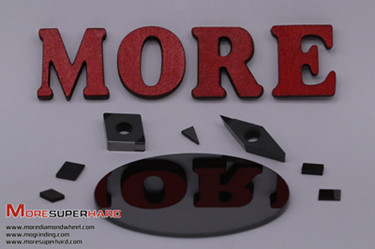Spatial Positioning of Diamond Composite Plates
The spatial positioning of the composite is the spatial position where the composite is placed on the drill bit. The spatial positioning of the composite chip is the key point of the design of the composite chip bit, which has a great influence on the drilling performance of the bit.
1. The negative front Angle of a diamond composite plates
The negative rake Angle is usually between 0 and 25 degrees to suit the needs of different formations. For soft formation, the negative rake Angle is 0 degree or a smaller value. For hard formations, the negative front Angle should be large to effectively cut the formation and prevent impact damage to the composite.
Because the formations drilled with composite bit in geological drilling and engineering are usually hard and, to some extent, because of the bit’s versatility, the negative rake Angle of the composite bit in geological exploration is usually 15 degrees.
2. The side Angle of a diamond composite plates
The side Angle of the diamond composite plates on the bit is conducive to the cleaning of the bit and the transfer of rock powder. The cuttings can be pushed to the front of the composite or to the side of the composite after being cut off. The arrangement of the composite plates with side angles makes the debris transfer to the annular space actively, so as to achieve the purpose of removing debris in time. The side angles of composite blade bits used in geological exploration are smaller than those of oil well bits, usually between 5 and 10 degrees.
3. The exposure height of the diamond composite plates.
The exposure height of the diamond composite plates is mainly considered from two aspects, one is cooling and discharging powder, the other is the impact resistance of the composite sheet. In small bore core drilling, the flushing capability is generally sufficient to meet the requirements for cooling and flushing, and the composite can be exposed as much as possible. But the large exposure, the composite must bear large impact force. Previously, because the welding technology is not up to standard, the impact resistance of the composite itself is limited, the general use of part of the form of exposure to increase the impact resistance of the composite.

